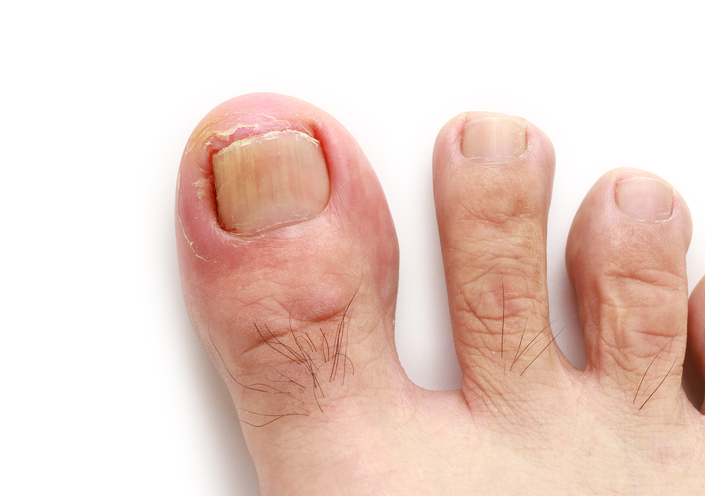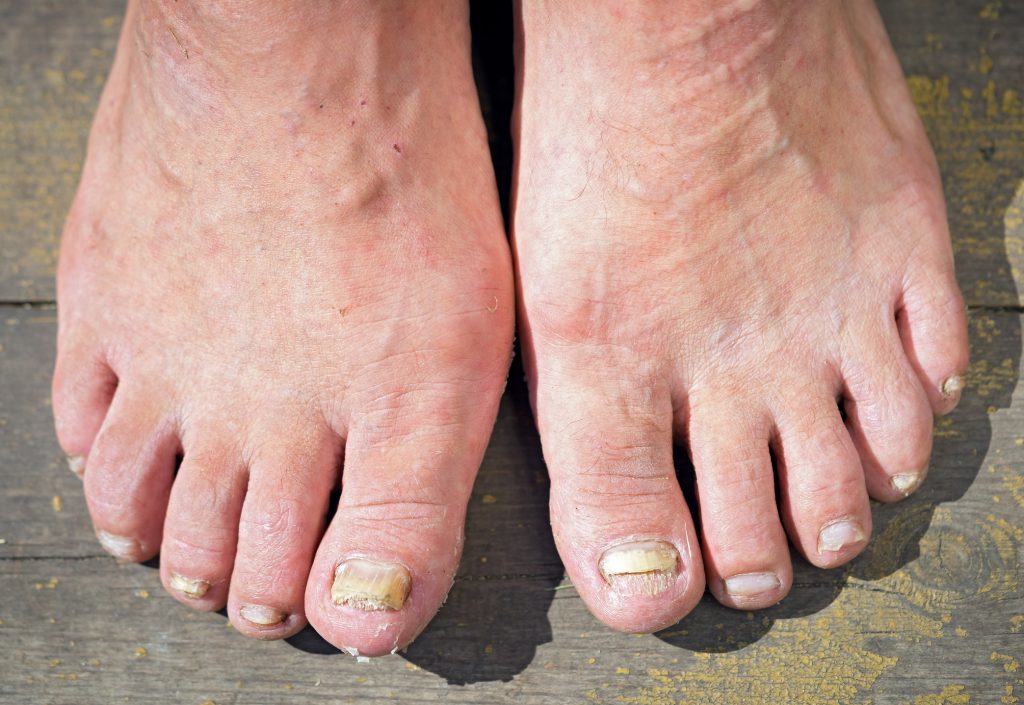Nail Fungal Infection Treatments from U.S. Dermatology Partners
What Is a Nail Fungal Infection?
A fungal infection of the toenails or fingernails typically looks like white or yellowed nails that may also be thick and brittle. The infection could affect one nail or part of a nail, or it could affect multiple nails. If left untreated, fungal infections can lead to permanent nail damage.

Fungal infections of the nails lead to white or yellowing nails that can be thick or brittle.
Find This Service Near You
Who Is at Risk for Fungal Infections?
Getting a fungal nail infection is remarkably easy.
Toenails are the most vulnerable to fungal infection because they spend most of their day in socks and shoes, both of which trap moisture that promotes fungus growth. Walking barefoot in a warm, moist place like a pool or gym locker room where someone else with a nail fungus has also walked barefoot puts you at risk.
Fingernails that are wet for hours at a time are also susceptible to fungus and a fungal infection on your foot can spread to your fingernails.
People with diabetes or weakened immune systems that acquire a fungal nail infection have an increased risk of developing sores that won’t heal and should seek treatment immediately.
Fungal Infection Symptoms

- Nail discoloration (white, yellow, brown or green)
- Thickening of the nail (or thinning)
- Nail “lifts up” from the finger or toe and crumbles
Fungal Infection Treatment
Fungal nail infections are easy to get but hard to treat, and recurrence is common.
Most topical anti-fungal medications applied directly to the nail are ineffective because they cannot penetrate the hard nail in sufficient concentration to kill the fungi. If the fungal infection has already reached the nail bed (where the nail starts growing), oral medications may be prescribed. These medications reach the nail bed through the bloodstream.
If the nail is badly damaged, it may have to be removed.
Fungal Infection Prevention
The best way to prevent fungal nail infection is to practice good hygiene and keep your hands and feet clean and dry. Other recommendations include:
- Keep your skin dry — especially between the toes.
- Wear shower shoes in damp public places like swimming pool bathrooms and locker rooms.
- Keep your nails trimmed and clean.
- Wear well-ventilated shoes.
- Change your socks regularly, especially after exercise.
- Wear rubber gloves when washing dishes or overexposing hands to moisture.
- Sterilize any instruments you use on nails before and after every use.
- Wash your hands after touching an infected nail.
*Results may vary by individual

